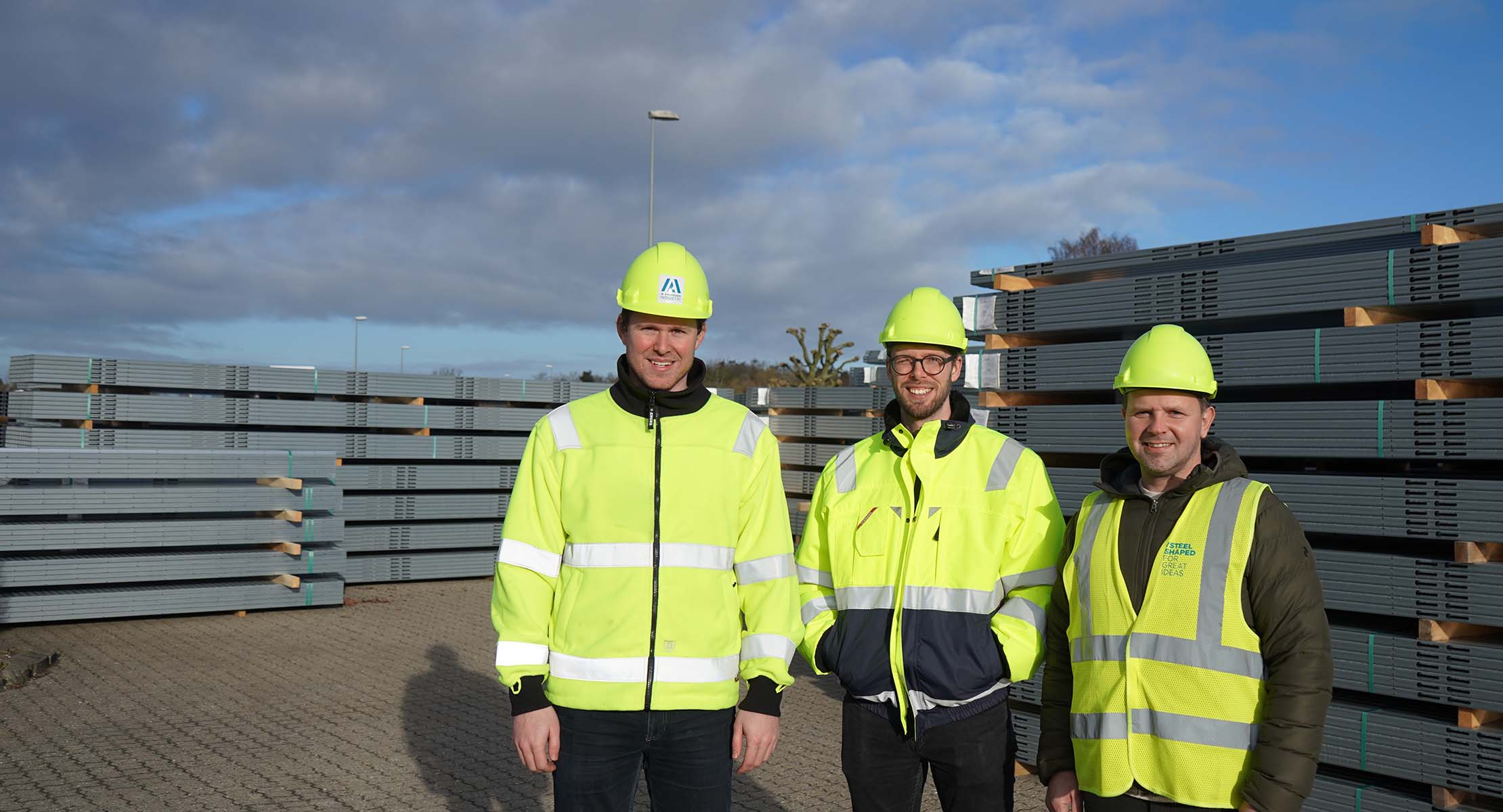Steel's impact on the value chain's total CO2 emissions cannot be ignored:
"On average, the creation of the steel itself accounts for 80-95 per cent of the CO2 emission in the value chain of the finished steel parts, so there is no doubt that even small adjustments in the amount of steel has an impact on the CO2 account," explains Kasper D. Rasmussen, Energy and Environmental Manager at Ib Andresen Industri.
At Ib Andresen Industri, this corresponds to approx. 2,100 kg CO2 per tonne of steel. It is approx. the same emissions as a return flight from Copenhagen to Seoul in South Korea – mind you for one person.
"That is without taking into account the emissions from transport, processing of the steel, painting, etc. - that part typically accounts for 100-400 kg of CO2 per ton of processed steel. With that discharge, the flight can continue from Seoul to Tokyo in Japan", adds Kasper.
Easier solutions
Ib Andresen Industri has now, over a number of years, worked together with several of their customers on better utilization of the steel in their steel parts, and according to Jesper Hansen, R&D Manager at Ib Andresen Industri, this has reduced the consumption of steel:
"Through dialogue and close cooperation with customers, we have helped to reduce the amount of steel and thus created easier solutions. We have an example from the solar industry, where, based on the customer's drawings, we reduced the total amount of steel in the steel structure by approx. 15 per cent. Here, it was advice on steel quality that enabled us to reduce thickness.”
At the time of writing, Ib Andresen Industri is having a dialogue with a customer in the construction industry, where the amount of steel - if everything boils down - will be able to be reduced by 20 per cent:
"It is not everyday that we can reduce the amount of steel by so much. It is typically around 5 per cent when it is successful - but it means something both on the customer's bottom line and in the CO2 account," adds Jesper Hansen.
But what if new technology is heavier and therefore requires more steel?
Higher output
New and improved technologies are constantly introduced to the market. But even if the technology's performance becomes greater, this does not mean that the associated hardware will experience growing pains – on the contrary. Just think of the size and performance of a computer from the 1980s compared to a smartphone. But this is not always the case – at least not in the short term.
Again with an example from the solar industry. A great development has taken place here. “The solar panels that our customers used back in 2019 could typically generate 365 watts. In 2021, that figure was up to 590 watts. It's quite an improvement, but the solar panels are a bit heavier. And therefore we have had to strengthen the steel structure under them," says Jimmy H. Larsen, R&D Engineer at Ib Andresen Industri.
But according to Kasper D. Rasmussen, it is not that bad that: "Output per watt has increased significantly more than the weight of the frames - respectively 62 per cent. and 25 per cent. Which results in a CO2 reduction of 35% per kWp (kilo Watt peak) from the steel frames on which the solar panels are installed. In that way, there is still a positive, green development.”
Easier to navigate CO2 emissions
The proposal that all companies that meet certain criteria must account for their entire value chain's CO2 footprint in 2023/24 is up for consultation in the EU.
If the proposal is adopted, it applies to companies that can tick two of these three points: (i) have more than 250 employees, (ii) have a net turnover of more than DKK 40 million. EURO or (iii) has a balance sheet total of more than DKK 20 million. EURO.
"If it is adopted, it does not mean that the companies are then forced to reduce their CO2 footprint, but it will be easier for investors and end customers to navigate for greener alternatives, and I think this will motivate companies to take a closer look The CO2 emission and how to positively do something about it," assesses Jesper A. Olesen, Corporate Brand & Marketing Strategist at Ib Andresen Industri, and adds:
"We can already start the dialogue with our customers about CO2 emissions through the value chain and provide input on how it can be reduced. Here, we are not only thinking about better utilization of steel.”
PHOTO / Kasper D. Rasmussen, Energy and Environmental Manager (tv), Jesper A. Olesen, Corporate Brand & Marketing Strategist (m) and Jimmy H. Larsen, R&D Engineer (th)
